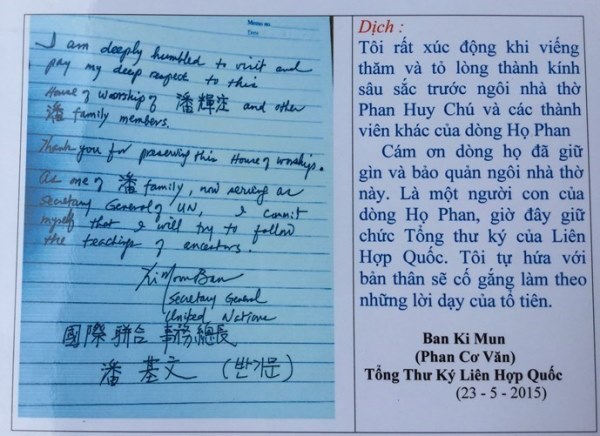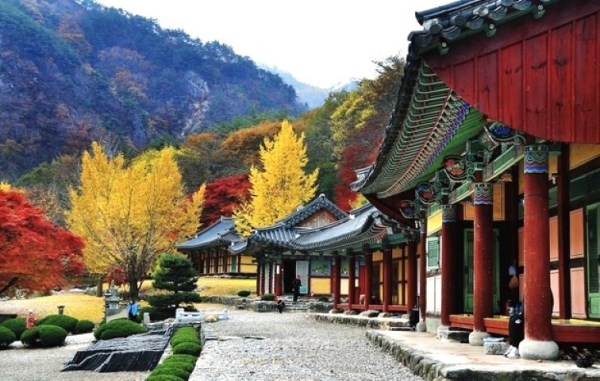With the Korean Peninsula figuring prominently in the news in recent months—from the PyeongChang 2018 Olympic Winter Games to the nuclear threat and diplomatic negotiations—I’ve been reminded of a long-standing historical link between Korea and Vietnam.
It all began in 1958 during the state visit to South Việt Nam by then-South Korean president Rhee Syngman. The surname Rhee is sometimes recorded as Li, Lee, or Yi when phonetically transcribed into English. For my Vietnamese friends who may still remember, his name, as transcribed from the equivalent Chinese characters into the Vietnamese alphabet, is Lý Thừa Vãn. Anyway, the South Korean president made big news at the time when he disclosed that his family actually descended from the Vietnamese royal dynasty Lý, which ruled Đại Việt (as Việt Nam was then called) from 1009 A.D. to 1225 A.D.
According to historical records, in 1225 when the Trân family usurped the throne from the Lý and set out to exterminate all its descendants, the seventh son of King Lý Anh Tôn, Royal Prince Lý Long Tường, escaped from Việt Nam with his family, some mandarins and soldiers on three large ships. After months of getting battered by typhoons on the South China Sea, they ran aground on the western coastline of the Korean Peninsula. The Korean king allowed the self-exiled party to stay and even granted them some land to settle. Years later, when the Mongols launched multiple attacks on the peninsula, Prince Lý Long Tường, then in his seventies, led his own clan and the local people to successfully resist the invaders. It was said he used to ride a white horse to battle, which earned him the title “White Horse General.”
The location where the Mongols were defeated was named the “Gate of Surrender Acceptance,” and the Korean king had a pillar erected on the site in honor of the Vietnamese hero. The pillar, along with the Lý family’s tombs and worship hall, have survived until this day in the Hwasan region in North Korea. On a hillside nearby, there’s a flat rock where Lý Long Tường was said to have frequented so that he could gaze south over the open water and remember his old country. It’s now known as “Nostalgia Peak.”
Thus was the origin of the Lee clan from Hwasan (Hoa Sơn in Vietnamese), of which the former South Korean president, Rhee Syngman, was a 25th generation descendant. During the Việt Nam War, South Korea was a free-world ally that sent troops to assist South Việt Nam in its fight against communism. Among those troops was the 9th Infantry Division, nicknamed “The White Horse.” This was deemed a nod of acknowledgement to the historical link between the two countries that went back 700 years.
Fast forward to the 1990’s. Research conducted by a respected South Korean genealogist and university professor uncovered evidence that another Lee clan, this one from JeongSeon (Tịnh Thiên in Vietnamese) in South Korea, was also the progeny of a Vietnamese Lý royal. Ancient family records and state archives show that this clan descended from Royal Prince Lý Dương Côn, who had arrived in Korea with his family and followers even a century before Lý Long Tường and his own clan. The circumstances under which this event took place were unclear, although it is thought that this second (or first, in chronology) self-exiled party had left Đại Việt following a war of succession.
At any rate, both of these Lee clans are still known to preserve and honor their Vietnamese heritage today. In fact, starting in the late 1990’s many of the clan members have visited Việt Nam and gone to pay their respect at the original Lý house of worship in Đình Bảng District (Băc Ninh Province, North Việt Nam). Many have even adopted Vietnamese citizenship, and in 2017 one of them, Lee Cheng Kun (Vietnamese name: Lý Xương Căn), a 26th generation descendant of Lý Long Tường, was appointed Việt Nam’s tourism ambassador to South Korea.
Another surprise wrinkle surfaced in 2015 when it was revealed that then-UN Secretary General, Ban Ki-moon from South Korea, had paid a private visit to the Phan family in Quôc Oai District in Hà Nội during his trip to Việt Nam. This is a well-known family of Vietnamese scholars (Phan Huy Ích, Phan Huy Chú) going back many centuries. During this private visit, Mr. Ban burnt incense at the Phan ancestral altar and wrote a commemorative note before he and his wife posed for photos with members of the family. It turned out that Mr. Ban, whose last name in Chinese characters is spelled the same as the Vietnamese name Phan, actually considered himself a member of the family. In his note, written in English, he said:




I am so glad to have read this note about the lost tribes. It’s very interesting. Lots of thanks
Bonjour, Marylene! It’s so nice to hear from you. I’m happy you enjoyed the fascinating history of those early immigrants.
The Japanese and possibly the Koreans pronounce the R as an L therefore Rhee should be pronounced Lee.
Thank you very much for the information. It explains the discrepancy in the spellings.
Merci beaucoup de nous partager ces precieuse informations
Il n’y a pas de quoi. Je suis ravi que vous ayez aime ca.
I have heard sayings that a certain Korean Kim clan, in centuries past, had migrated to Vietnam. Do you have any information regarding this?
Thanks you in advance.
Hi, Nick! Welcome. No I haven’t heard anything about the Kim clan. Let me know if you find out more about this.